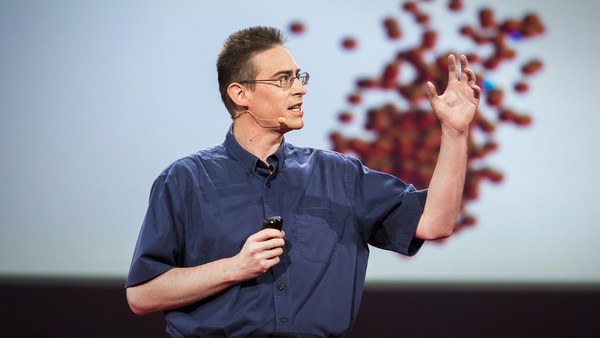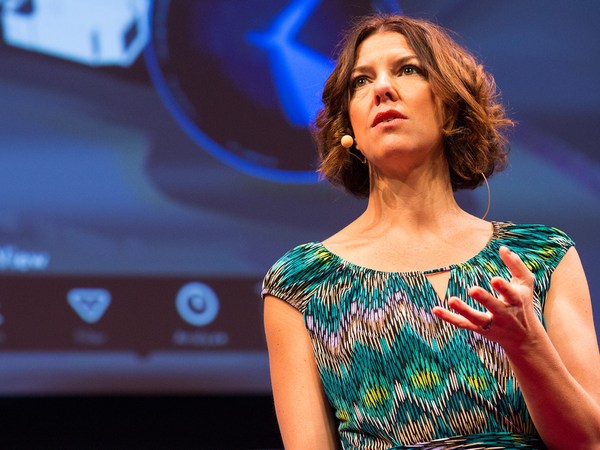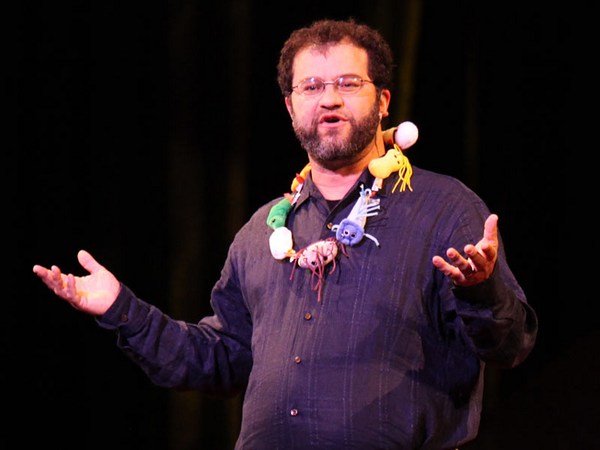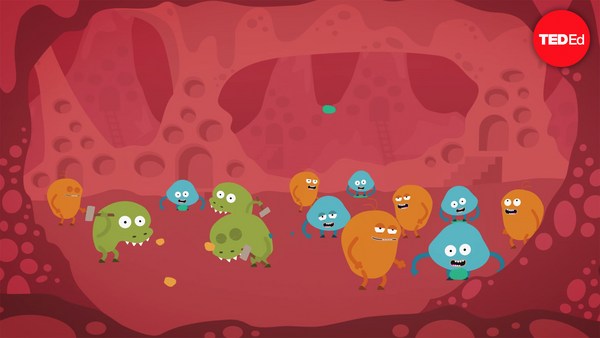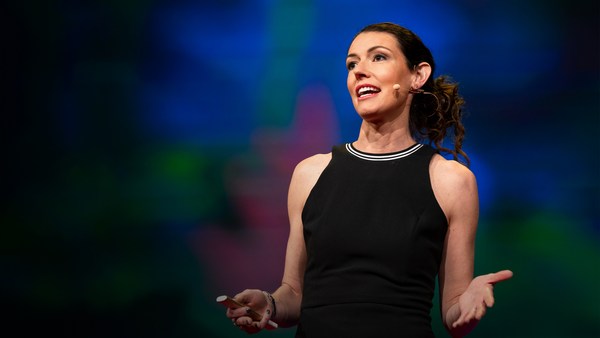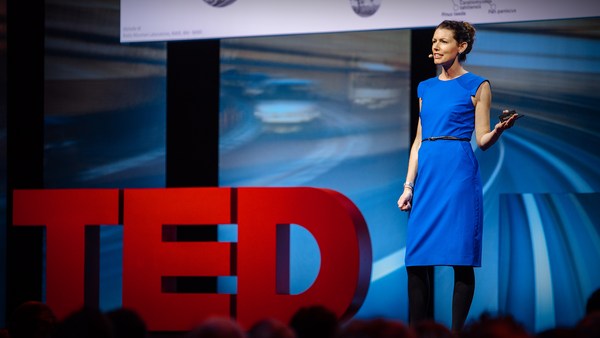If I asked you to name a microbe that's living in your gut, many of you would probably say E. coli. A lot of people say this. It's the best-known of the gut microbes. But it turns out that E. coli is outnumbered in your gut about a thousand to one by other species, many of which you probably haven't heard of. These are Bacteroides; Prevotella is another example. Those are the two that dominate the modern human gut.
There are about a hundred trillion microbes living inside you. We call this your microbiome, so it's like a little world living inside you -- actually more like a universe. A hundred trillion means if you took a blade of grass and planted it for every microbe living in your gut, that could fill a million football fields. So it's incredibly complex. But interestingly, as our bodies have been adapting to life in modern society, we're losing some of our normal microbes, and at the same time, there are quite a few diseases related to the gut that are skyrocketing in developed nations all around the world. And many of you probably know someone who suffers from obesity, diabetes, Crohn's disease or ulcerative colitis, allergies and asthma. Every one of these diseases and many others related to metabolism and autoimmunity are linked to a loss of healthy diversity in the gut.
My lab got our first indication of this when actually we were studying non-human primates. We wanted to find out what happens to a monkey's microbiome when they move from the jungle to a zoo. Does their microbiome change? Do they pick up new bugs? Do they lose some? Does it get better or worse? We tracked two different species in the jungle, one in Vietnam, one in Costa Rica, and then we sequenced the DNA from their stool. This is how we study the microbiome in my research lab. And what we found in the DNA is that in the wild, these two species had totally different sets of microbes. It was like a fingerprint for the species. But in the zoo, they had lost most of that diversity and had acquired some other set of microbes.
So this was very curious. We've got these two different microbiomes. In the wild, picture a lush tropical rainforest living the guts of these monkeys. That's the kind of diversity that we're talking about. Then in the zoo, they've lost diversity. Picture a rainforest that's been burned to the ground and taken over by a few invasive species. That's more like the microbiome in a captive primate. Now, in the meantime, many of the animals in the zoo are not doing so well. They have issues with obesity, wasting, gastroenteritis, diarrhea, bloating, and some of them were barely holding onto their lives.
Now, of course, we were very interested to find out what are these so-called invasive species that are taking over in the zoo. So we went back to the DNA, and what the DNA told us is that every monkey in the zoo had become dominated by Bacteroides and Prevotella, the same microbes that we all have in our guts as modern humans.
We wanted to find a way to visualize this, and we used some tools from multivariate ecology to put all of the microbiomes we were studying onto an axis. And what you're seeing here is a distance plot where every point is a different animal's microbiome. So every point represents a whole zoo of microbes. And the microbiomes that have a lot of microbes in common are close to each other. The ones that are very different are farther apart. So this is showing you that the two groups of wild monkeys are over on the left. The top left are these highly endangered monkeys called the red-shanked douc in Vietnam. And at the bottom left are monkeys from Costa Rica. So you can see that they have totally different microbiomes in the wild. And then the same two species of monkey in the zoo are converging, so their microbiomes change and they become much more similar to each other, even though these are zoos on different continents, different geographical regions, and they're eating different diets.
Now, we did study some other species of primate. What species of primate do you think is even more divergent from the wild primates than the captive primates? Modern humans. These are humans living in developing nations. So they were more different from the wild primates than those in the zoo.
And the final group that we studied, all the way on the right, is people living in the USA. And when I saw this figure, the hairs raised up on the back of my neck, because one way to think about it is, "Oh, that's interesting, captive monkeys are sort of on their way to becoming like Americans."
(Laughter)
But the other way to think about it is that Americans are like super-captive monkeys. And I was actually looking at this figure on my computer screen when I got the news that four of the red-shanked doucs had died in the zoo of gut-related issues. So for some of these animals, having the right microbes living inside them may be a matter of survival.
Now this brings us to the human part of the story. Obviously, the microbiomes in the USA aren't causing premature death as frequently as in the zoo, but we have major risk of obesity, diabetes, a number of these other diseases. And this applies not just to people who have been living in the USA for many generations, but also to immigrants and refugees, who, for most immigrant and refugee groups, arrive in the USA metabolically healthy, and then within a few years, they become just as high-risk for obesity and diabetes as other Americans. And we discussed this issue with two groups that have been coming to the USA from Southeast Asia: the Hmong, who started coming in the mid-1970s as refugees from the Vietnam War and the US secret war in Laos; and the Karen, who have been coming more recently as refugees from Myanmar. So we've been working for a few years with these local communities and clinicians to study what happens to the Hmong and Karen microbiomes when people move from refugee camps and villages in Thailand to the USA. And what we found is that when people come to the USA from these groups, they lose a large fraction of their microbiome, somewhere around 20 percent, and those who come to the USA and become obese lose about a third of their microbes.
So we know that moving to the USA is sufficient to cause a dramatic change in your microbiome, probably not for the better. Are these microbes actually causing the obesity, or is the obesity causing a change in the microbes? This is something that we're following up on, and the evidence we have now in my lab combined with evidence from a number of labs around the world tells us that certain changes in the microbiome do lead to obesity, and a number of other modern, kind of Westernized diseases.
The good news is that your microbiome can actually change. Unlike your own genome, it's a living, breathing thing, and there's a broad front of research happening right now to better understand how we can restore our microbiomes when something goes wrong, using diet, using live microbes. And in fact, one of the next steps for us is collecting and preserving microbes from healthy people around the world so that they can be kept as cultural assets for those groups to potentially protect them as they adapt to modern society, and to protect future generations who are currently growing up to have increased risk of these diseases with every generation.
I'm looking forward to a future where we have the tools that we need to restore and replenish our microbiomes, and in that world, the monkeys will live happier and healthier lives, and so will we.
(Applause)
